Can You Microwave Glass? How to Know What's Safe
Author: Anne Cowart | Editor: Omar Alonso
Review & Research: Jen Worst & Chris Miller

Can you microwave glass safely? The answer is a conditional yes, with several glass materials that are available for microwave use. Also, each glass type has several advantages over alternatives such as plastic containers.
The benefits exceed other options, and you can easily find microwave-safe glass containers online or in a big box store. But first, you should know why specific glass containers are safe to use in the microwave overall.
Glass is better than most paper products or plastic because it does’t percolate chemicals. However, restaurant take-out containers made of paper or plastics are great for temporarily carrying food.
Unsafe Glass Options for Microwaves
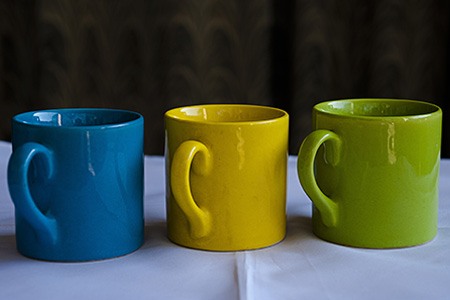
Is glass safe in the microwave? Not all of them. Knowing what type of glass is unsafe for your microwave can help you save time and boost your confidence in making the right choice. For example, you can't use some varieties of glass-ceramic cookware in the microwave.
So let's consider these unsafe options before you use glass in a microwave.
- Glass with metal trim or inlay
- Glassware with tinting
- Colored glass-ceramics
- Glassware of unknown manufacturer's origin
- Unlabeled glass-ceramics
Additionally, glass ceramics are a small part of the entire family of ceramic cookware. Glass ceramics have glass-like characteristics but are more durable. However, you can’t use all glass ceramics in the microwave because of their conductivity and inability to withstand quick temperature changes.
So before you pop a cup of water in the microwave to soften up the gunk in it before you clean it like so many of us do, thinking you'll make the microwave smell better, make sure the glass is of the type that can be microwaved.
Say Yes to Pyrex Glassware
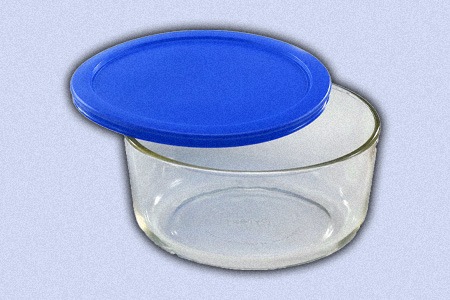
Can you microwave glass that is labeled Pyrex? Yes, borosilicate glass is a type of microwavable safe glass trademarked by Pyrex. Pyrex glassware is highly resilient and withstands higher temperatures. This option is better than standard glassware because of its durability.
Think about these safety measures before using borosilicate glass in the microwave.
- Avoid rapid temperature changes
- Don’t place heated containers on a countertop
- Use a heat-resistant mat made of silicone to place containers safely
- Avoid using containers to microwave popcorn
- Use the minimum time to heat oils and butter in the microwave
- Use an appropriate size container
- Do not use empty or almost empty containers in a microwave
- Keep heated containers away from wet countertops and surfaces
Borosilicate cookware can crack, shatter or break if not used correctly. In addition, incorrect use of borosilicate glass includes thermal shock.
Thermal shock happens when borosilicate glass is placed in a cold place and is heated in the microwave immediately afterward. Like standard glass, always use the same care when using Pyrex or generic borosilicate glass.
Safely Using DuraLite Glass in Microwaves
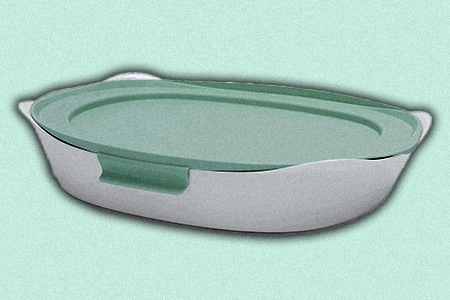
Do you know how to use DuraLite glass in a microwave safely? DuraLite is a newly incorporated material and brand under another company's umbrella, Rubbermaid. The Rubbermaid company has many options for microwave use. Yet, Rubbermaid's DuraLite bakeware collection is a higher-end choice.
Consider the leading-edge features of this microwave-safe bakeware:
- It has the highest heat tolerance of any ceramic or glass bakeware currently available
- This choice is chip and resistant to breakage
- It is a solution that's all-in-one in the kitchen for cooking in the microwave
- It is lighter than traditional ceramic choices
- It is available in different sizes to safely reheat a range of portion sizes
- Although it is oven safe, it's safe for microwave use
To safely ensure that you're using DuraLite glass in the microwave correctly, it is required to avoid specific actions. For example, avoiding using a cold or frozen DuraLite container immediately in the microwave is essential. Notably, temperature shock can permanently damage a Rubbermaid DuraLite container.
Ways To Stay Safe When Using Glass in the Microwave
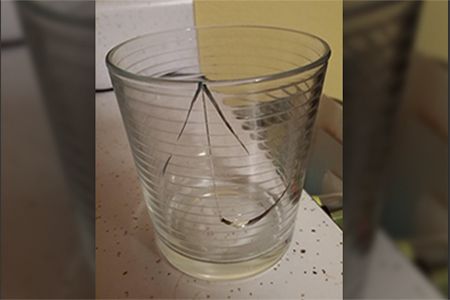
Can you put glass in the microwave? The right kind, yes, but be careful. There are some ways to stay safe when using glass in the microwave. No matter what type of microwaveable glass you use, taking certain safety precautions is essential.
Some safety precautions include following the manufacturer's instructions for every glass container type. Additionally, when considering using glass in a microwave or any microwave alternatives, it's vital to be safe; think about the following four considerations:
1) Remember to avoid water heated at super high temperatures in any glass container used in a microwave. If you over-microwave liquid in a microwave glass container, it can cause the water to burst out of the container.
2) To avoid injury to yourself, such as scalding your skin, always prevent over-boiling liquids in the microwave.
3) Always expect your glass containers before you use them in any microwave. Heating liquids adequately will help you to avoid any injury to yourself.
4) Do not handle glass containers immediately after heating them in the microwave. Being precautious can help prevent burns to your skin and other wounds.
5) Glass that has cracks in it, even small hairline cracks, are much more likely to shatter or even explode when exposed to heat. Inspect your glass for cracks that are either small or have propagated enough to really be concerned.
Remember, not all glass containers are safe for microwave use. It's essential to check the container for a label indicating whether it's for oven, microwave, or stovetop use. If you're using any vintage cookware made of glass, there are ways that you can check them to make sure that they are microwave safe.
What to Do When Checking Glass Container Labels
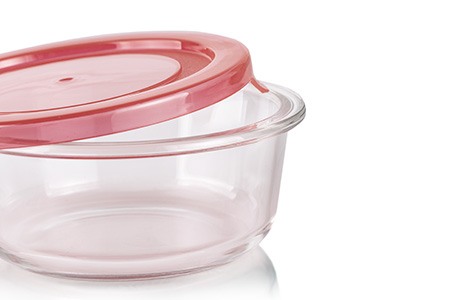
Have you considered what to do when checking glass container labels? Typically, newer glass containers have clear stamping indicating microwave safety. Some important label-savvy lingo includes "microwavable", "microwave", and "microwave safe".
Sometimes only pictures appear at the bottom of your glass containers or lid. The indication on the glass container can show a simple picture, logo, or etching of a microwave as a symbol.
It is usually microwave safe if you see a microwave symbol and don’t see any words. However, you will likely see the microwave symbol and wording together.
If you have an older glass container, it is imperative to do a microwave test to ensure safe handling. Any glass container made before 1970 won’t have a label for microwave-safe use. It wasn't until after 1970 that microwavable cookware was invented and became mainstream.
How to Test Glass Containers for Resistance
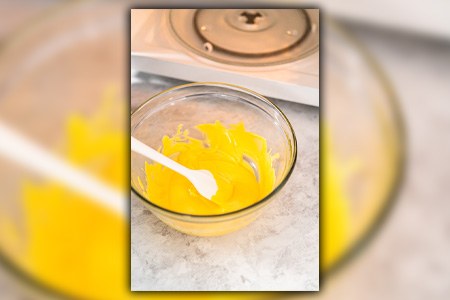
Can you microwave glass containers without a safety symbol or label? Microwaving glass containers without a safety symbol or stamped label can be tricky.
You should gather some materials before beginning the test. They include a container without any microwave-safe labeling, a microwave-safe cup, a water source, and a microwave.
First, look at the six steps so you can test to see if your container is microwave safe:
1) Make sure there are no stamps on the container you intend to test and see if it is safe for the microwave.
2) Next, make sure your microwave is on its highest setting. Usually, this is a power button, level of power, menu settings, or quick pick setting.
3) Fill a cup that is microwave safe with at least 8 oz or a cup of water. Do not use water that is too cool or too hot for the microwave test. Place your microwave-safe cup with water on the microwave plate.
4) Place the glass container you intend to test on the microwave plate without water with your microwave-safe cup with water.
5) Heat your microwave-safe cup with the water and the container you intend to test simultaneously for 60 seconds.
6) At the end of 60 seconds, use extreme caution to touch the container without the water to ensure it is not hot. If the container you are testing is not too hot, this signals that it is safe to use in the microwave without a problem.
The container you are testing without water should be slightly warm when you carefully touch the outside surface. Notably, after 60 seconds, the container you intended to test without the water should be warm when you carefully touch the exterior surface.
Although this may indicate that it is safe to use in the microwave, it is essential to use caution when using a tested container. Always inspect it before you use the unlabeled container for cracks and blemishes that indicate misuse. Do not use glass containers with cracks, defects, or chips in the microwave.
Can You Microwave Glass? Some Types, Yes.
It’s perfectly safe to use most glass containers in the microwave. In fact, using specific glass containers in the microwave can significantly reduce chemical exposure.
However, a central takeaway from this information is that you should use glass in the microwave with care and awareness. Always check the labels of your containers to make sure they are microwave safe, and when in doubt, follow the provided instructions to test your containers.
So can you microwave glass? Yes, in many cases. You need to check that it's safe first following the methods shared above.




